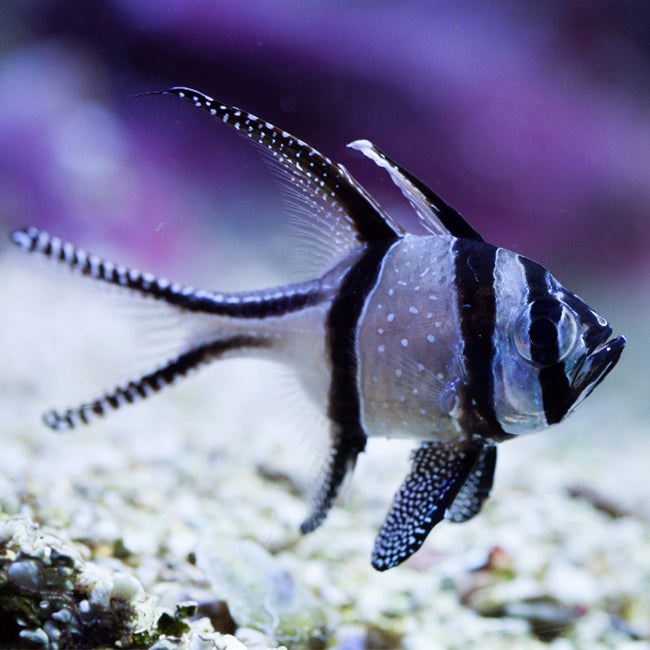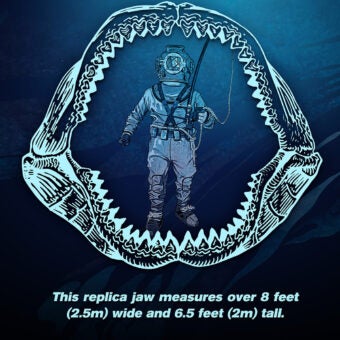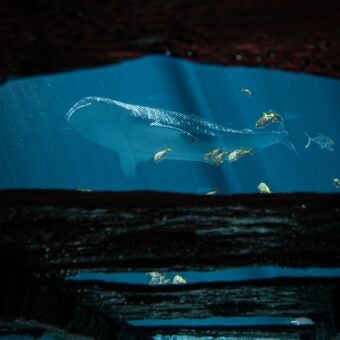-
Size
Up to 3 inches (8 cm) -
Diet
Copepods, marine worms, mollusks and fish larvae -
Range
Banggai Islands of eastern Indonesia -
Habitat
Shallow coral reefs and bays
Physical Characteristics
- Coloration is silver with three vertical black bands across the body. White dots are present between bands and on all fins except the front dorsal fin. These dots are unique to each individual fish.
- The first dorsal fin is shorter and tasseled while the second dorsal, anal and caudal fins are all elongated.
- Maximum length of 3 inches (8 cm).
Animal Fact
The Banggai cardinalfish is endangered in wild populations but thrives in aquarium environments.
Diet / Feeding
- Diet mainly consists of copepods (planktonic crustaceans). However, this species is an opportunistic feeder and will also eat marine worms, mollusks and fish larvae.
- Feeding behavior decreases as the day goes on and ends around sunset.
- May play an important role in coral reef habitats by eating larvae of parasites that target other fish in the habitat.
Range / Habitat
- Occurs in the Banggai Islands of eastern Indonesia.
- Typically found in shallow habitats, often with sandy bottoms and sea grass. Can also be found in coral reefs and bays where the water is relatively still.
- Juveniles are very small and can often be found in sea anemones, sea urchins or corals for protection.
Reproduction & Growth
- Oviparous, or egg-laying species.
- Females choose a male mate, and together the two fish establish and guard a territory.
- Engages in paternal mouthbrooding; after the female spawns up to 75 eggs, the male holds and guards the eggs in a pouch in its mouth.
- Eggs hatch in about 20 days and develop another 10 days before being released from the mouth.
- During the brooding period, the male does not eat; it will turn the eggs inside its mouth and expels dead eggs.
Conservation Status
- “Endangered” on the IUCN Red List.
- Found only in the Banggai Islands, this species’ highly restricted geographical range increases its vulnerability to threats.
- Habitat degradation due to pollution is a large threat to this species.
- While Banggai cardinalfish are endangered, this species thrives in aquarium environments.
Additional Information
- Usually lives in groups of up to six fish, though groups of up to 500 have been recorded.
- May associate with bottom-dwelling organisms such as sea anemones, sea urchins and corals for hiding and protection from predators.





